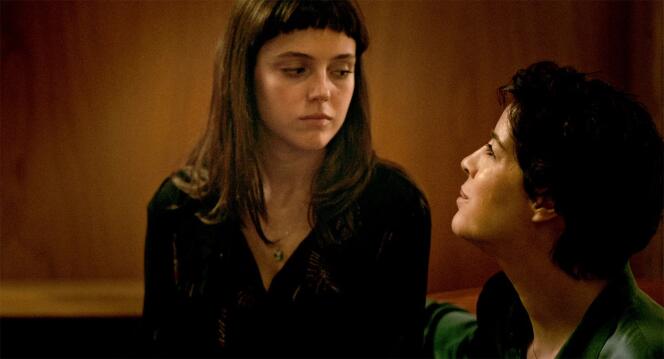THE “WORLD’S” OPINION – MUST SEE
Under the pressure of series, for some time now we have seen duration once again become a strong issue in contemporary auteur cinema, and we no longer count the objects exploding the average of two hours, at the same time reconnecting with the horn of abundance of the romantic, the taste for the characters, the hide-and-seek games of fiction. This is evidenced by the copious ensemble composed by Bad Living And Living Badlywhich arrives on French screens, preceded in reputation by a Silver Bear won during the Berlinale 2023. Its mirrored device joins two Siamese films, around the same place and the same cluster of events.
Its director, the Portuguese Joao Canijo, 65 years old, little known because unevenly distributed in France, is the author of around ten feature films since 1988, after having assisted Manoel de Oliveira (1908-2015) as the cream of authors Europeans who came to film in Lisbon (Alain Tanner, Wim Wenders, Werner Schroeter).
The action takes place in a luxury hotel on the north coast of Portugal, where rich, sometimes famous tourists go to hang out for a few days around the large outdoor swimming pool. The first part (Bad Living) is dedicated to the owners, a dynasty of women – mothers, daughters, cousins – who run the establishment at arm’s length, taking care of the reception, the cleaning, the cooking or table service. Piedade (Anabela Moreira), unstable boss, prone to nervous breakdowns, brings a saturnine and unhinged mood to the place that worries everyone. The surprise arrival of his daughter Salomé (Madalena Almeida) increases the tension and overturns the status quo of the gynoecium.
Vitrified aesthetics
The second part (Living Badly) invests the same continuum, but this time from the customers’ point of view: sick couple of alienated influencers, abusive or vampiric mothers (including the imperial Leonor Silveira), torn or disowned children. The central action of the first part becomes the background of the second, and vice versa.
The whole thing is intriguing with its twisting and poisonous spatialization, its sophisticated framing, its elegant play on distance and scale. Canijo plays with the hotel structure as a fragmented, fully unfoldable space, where each character circulates in an oppressive framework of horizontal and vertical lines. The walls express separation, the windows lit in the night show parallel destinies. On the other hand, what the diptych tells is less pleasant: each story digs into the same depths of old psychodrama, based on neurotic heroines, feminine curses, bonds full of resentment, love begged and not granted.
You have 20.92% of this article left to read. The rest is reserved for subscribers.
